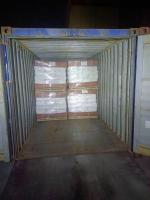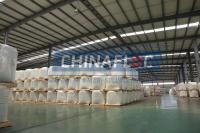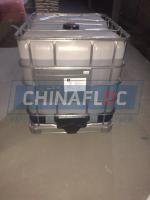Our Products
Polyacrylamide / The equivalent model of Zetag 4120 Zetag 4139 can be replaced by Chinafloc A zeries

The equivalent model of Zetag 4120 Zetag 4139 can be replaced by Chinafloc A zeries
Investigating Zetag flocculants
I'm looking into Zetag 4120 and Zetag 4139, likely polymers used in wastewater treatment, to understand their specifications and applications fully.
Clarifying specifications
Zetag 4120 and Zetag 4139 are likely high molecular weight anionic polyacrylamide flocculants, commonly used in wastewater treatment and other industrial applications.
Breaking down applications
Zetag 4120 and Zetag 4139 are essential anionic polyacrylamide flocculants, widely used in wastewater treatment, water clarification, and dewatering processes, targeting suspended solids in water.
Providing general insights
I'm ensuring a careful approach by offering general specifications for Zetag 4120 and Zetag 4139, including molecular weight and anionicity, while noting potential differences.
Clarifying product roles
Interestingly enough, Zetag 4120 and Zetag 4139 are both anionic polyacrylamide flocculants, though one is high molecular weight and the other medium molecular weight, highlighting their diverse applications.
1. Introduction to Flocculant Polymers and the Zetag Series
Flocculants are water-soluble polymers used to enhance the separation of suspended solids from liquids. Among these, polyacrylamide-based flocculants have become standard in many water treatment and dewatering applications. The “Zetag” series, which includes grades such as Zetag 4120 and Zetag 4139, is part of a family of high-performance polymers engineered to optimize the process of coagulation and flocculation.
Anionic polyacrylamide (APAM) is a derivative where the polyacrylamide backbone has been modified to include anionic (negatively charged) groups. These negative charges impart the polymer with a strong affinity for positively charged colloidal particles and help to neutralize the surface charges that keep fine particles in suspension. The result is the aggregation (or “flocculation”) of these particles into larger flocs that can settle or be filtered more easily.
2. Overview of Anionic Polyacrylamide
Before diving into the specifics of Zetag 4120 and Zetag 4139, it is worthwhile to examine the core attributes of anionic polyacrylamide:
-
Chemical Structure:
Anionic polyacrylamide is made by copolymerizing acrylamide with an anionic monomer (often acrylic acid or its salts). The resulting polymer has a long chain structure with pendant carboxylate groups that confer the negative charge. -
Mechanism of Action:
The performance of anionic polyacrylamide is largely due to its ability to work by charge neutralization and bridging mechanisms. The long polymer chains adsorb onto particles, creating bridges between them, while the negative charges reduce the repulsive forces that typically keep the particles apart. -
Molecular Weight and Charge Density:
These two parameters are critical. A higher molecular weight generally enhances the bridging effect, and an appropriate charge density ensures that the polymer is sufficiently anionic to interact effectively with suspended solids. Manufacturers often tailor these properties to suit specific process requirements.
Anionic polyacrylamide finds applications in a range of industries, including water and wastewater treatment, mining, pulp and paper, and agriculture. Its versatility and efficacy make it one of the most widely used synthetic flocculants.
3. Specification of Zetag 4120
Zetag 4120 is designed to provide high-performance flocculation under a variety of operational conditions. Although proprietary details might differ slightly between suppliers, its general specifications typically include:
-
Polymer Type and Appearance:
Zetag 4120 is an anionic polyacrylamide polymer. It is typically available as a high-viscosity aqueous solution or as a powder that can be dissolved in water. The product is often described as having a uniform, consistent molecular structure that ensures repeatable performance. -
Molecular Weight:
This grade is engineered with a high molecular weight – often in the range of several million Daltons. A high molecular weight enhances the bridging mechanism, meaning that even at lower dosages, Zetag 4120 can effectively aggregate fine particles into larger, settleable flocs. -
Charge Density:
The anionic charge density is an essential parameter for performance. Zetag 4120 is formulated with a moderate-to-high level of anionicity (typically in the region of 20–30% charged groups). This level of charge is optimized for neutralizing suspended particle charges in typical wastewater and sludge matrices. -
Viscosity and Dilution Properties:
When used as a solution, Zetag 4120 exhibits a viscosity that is carefully controlled to balance ease of handling with effective molecular performance. It is engineered to be stable upon dilution, ensuring that it maintains its flocculation characteristics even when added to large volumes of water. -
pH and Temperature Stability:
Zetag 4120 is generally stable over a broad pH range (commonly pH 4 to 9), making it suitable for a variety of water treatment scenarios. In addition, the formulation is resistant to thermal degradation, ensuring that performance remains consistent even in processes where temperature fluctuations occur. -
Dosage Efficiency:
One of the critical performance metrics is the dosage efficiency. Zetag 4120 is designed to perform effectively at relatively low dosages (often in the range of 0.5 to 2.0 mg/L, depending on the water quality and suspended solids concentration), which not only improves process economics but also minimizes the potential for secondary contamination. -
Application-Specific Optimizations:
Because Zetag 4120 is targeted for use in applications such as sludge dewatering and municipal wastewater treatment, its formulation has been optimized to provide rapid settling and high solids capture. This ensures that it can be effectively used in continuous or batch processing environments.
4. Specification of Zetag 4139
While similar in many respects to Zetag 4120, Zetag 4139 is formulated with slight modifications to address specific challenges or optimize performance in particular applications. Its specifications generally include:
-
Polymer Type and Physical Form:
Like Zetag 4120, Zetag 4139 is an anionic polyacrylamide. It is available either as a concentrated solution or a dry powder designed for dissolution prior to use. The product is engineered for consistency and ease of handling in industrial settings. -
Molecular Weight:
Zetag 4139 is formulated with a molecular weight that might be comparable to or slightly lower than that of Zetag 4120, depending on the intended application. The molecular weight is chosen to ensure that the polymer chains are long enough to form effective bridges between particles, while still allowing for rapid dispersion and mixing in the target system. -
Charge Density:
A key differentiator for Zetag 4139 may be its optimized anionic charge density. While still within the moderate-to-high range (again typically around 20–30% anionic groups), the specific ratio is tuned to deliver excellent performance in environments with a different ionic strength or particle composition than those best served by Zetag 4120. This tuning helps in maximizing the charge neutralization and bridging effects under varied conditions. -
Rheological Properties and Dilution:
Zetag 4139 is designed to have excellent rheological properties. Its viscosity is maintained at an optimal level to ensure that when diluted, the polymer is evenly distributed throughout the water column. This helps achieve uniform flocculation even in systems with turbulent mixing conditions. -
pH and Thermal Stability:
As with Zetag 4120, Zetag 4139 is stable over a broad range of pH values. It is typically stable in environments with pH values from about 4 to 9, making it suitable for a wide variety of industrial processes. Its thermal stability ensures that it maintains its flocculation properties even if exposed to elevated temperatures or process-induced heat. -
Dosage and Efficiency:
Zetag 4139 is engineered to provide efficient flocculation at low dosages, although the exact dosage may vary based on the specific process parameters. The product’s formulation ensures that it can form robust flocs quickly, which is essential for applications requiring rapid clarification or dewatering. -
Application-Specific Considerations:
Zetag 4139 may be particularly well-suited for applications where the characteristics of the feed water or slurry demand a slightly different flocculant performance profile. For instance, it may be optimized for systems with higher levels of colloidal or fine particulate matter where rapid aggregation is required.
5. Main Applications of Anionic Polyacrylamide
Anionic polyacrylamide, including grades like Zetag 4120 and Zetag 4139, finds widespread use due to its effectiveness in promoting the aggregation of fine particles. The principal applications include:
A. Wastewater Treatment and Municipal Water Processing
One of the most common uses of anionic polyacrylamide is in municipal and industrial wastewater treatment. In these processes, the polymer is added to water containing suspended solids—ranging from colloidal particles to organic debris—to form larger flocs. This enhances the sedimentation or flotation process, leading to more efficient removal of pollutants. Key benefits include:
-
Improved Clarification:
By aggregating dispersed particles, anionic polyacrylamide improves the clarity of the treated water. -
Sludge Dewatering:
After sedimentation, the flocs form a sludge that can be more readily dewatered, reducing disposal costs and facilitating further processing. -
Operational Efficiency:
The rapid action and low dosage requirements help reduce the overall chemical footprint of the treatment process.
B. Industrial Process Water
In industries such as mining, metallurgy, and chemical manufacturing, process water often contains fine particulates and emulsified contaminants. Anionic polyacrylamide is used to:
-
Enhance Solid-Liquid Separation:
Its strong flocculation properties help separate solids from liquids, which is critical in recycling process water and minimizing waste. -
Improve Equipment Lifespan:
Removing fine particulates reduces abrasion and fouling in equipment, leading to fewer maintenance issues.
C. Pulp and Paper Industry
The paper-making process requires the removal of fines and other impurities from fiber suspensions. Anionic polyacrylamide is applied to:
-
Facilitate Fiber Retention:
The polymer aids in binding fine particles to fibers, thus improving the quality of the final paper product. -
Enhance Drainage:
It improves the dewatering process during paper formation, resulting in higher production efficiency.
D. Agriculture and Soil Conditioning
In agriculture, anionic polyacrylamide can be used as a soil conditioner. Its flocculation properties help:
-
Reduce Soil Erosion:
By binding soil particles together, it reduces erosion from wind and water. -
Improve Water Infiltration:
Flocculated soil tends to have better structure, which can enhance water infiltration and retention.
E. Other Niche Applications
Beyond these primary sectors, anionic polyacrylamide is also employed in:
-
Oil Recovery:
Enhancing the separation of water and oil phases. -
Paper Coating:
Improving the consistency and performance of coating formulations. -
Mining:
Assisting in tailings treatment by aggregating fine mineral particles for easier separation.




893_small.jpg)
